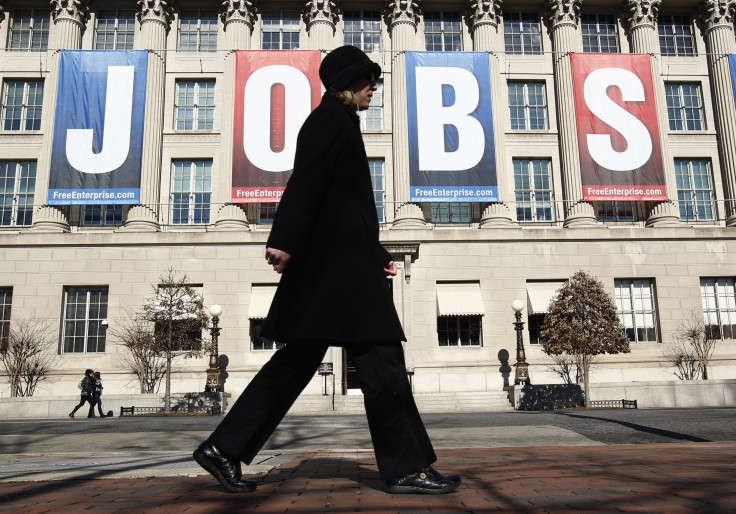January Jobs Report: US Economy Added 151,000 Jobs Last Month, Lower Than Expected, As Unemployment Rate Slipped To 4.9%

This story was updated at 9:50 a.m. EST.
U.S. businesses added 151,000 employees to their payrolls in January as the country’s main measure of joblessness dropped to 4.9%, the Bureau of Labor Statistics said Friday. The number was below the consensus estimate of 190,000 jobs in a Thomson Reuters poll of economists.
The Bureau of Labor Statistics also revised its numbers for the two previous months, with December's employment gain revised down to 262,000 from 292,000.
Hiring at manufacturers gained 29,000, the biggest increase since August 2013.
“Although the 151,000 gain in non-farm payrolls in January was below the consensus forecast of a 190,000 gain, the rest of the employment report was very encouraging,” Paul Ashworth, chief U.S. economist for Capital Economics, said in a research note. “That 151,000 gain in non-farm payrolls included a barely believable 29,000 increase in manufacturing.”
Wage growth, a crucial missing element in the post-recession recovery over the past seven years, has increased 2.5 percent over the past year and added 12 cents to $25.39 in January’s preliminary estimate.
The unemployment rate dropped to its lowest in eight years despite the big hiring miss last month.
“The somewhat slower pace of jobs growth in January is consistent with the slowdown in the economy’s growth in the fourth quarter of 2015,” Polina Vlasenko, a senior research fellow at the American Institute for Economic Research, said in an email. U.S. economic growth fell to 0.7 percent, below the consensus estimate of 0.8 percent.
The report could influence the Fed’s decision hold off on continued tightening after raising short-term interest rates in December for the first time since 2006. The policymakers still have February’s economic indicators to digest before their next meeting in March. A rate hike increases the cost of borrowing, which drags on corporate earnings.
“I think the question now is whether the economy has lost significant momentum and whether we might be at the peak of a growth cycle,” said Mark Hamrick, senior economist at Bankrate.com. “Unless the next five weeks come in with spectacular news, I don’t see a March rate increase.”
The new jobs numbers come as the U.S. service sector grew last month at its softest pace since February 2014 and after the nation’s economic growth slowed to 0.7 percent in the last three months of 2015, dragged down by a big drop in energy sector activity. Oil prices are hovering around a 12-year low while a strong dollar has hurt U.S. export activity.
Both factors have rattled global markets while the world gauges the broad impact of volatility in China and ensuing troubles in global commodities as demand falls in the world’s second-largest economy.
But so far, the U.S. economy has been fairly resilient, especially for businesses not heavily reliant on international sales or high oil prices. “There are pockets of weakness in the energy and trade-exposed sectors, but forward momentum remains solid,” Gregory Daco, head of U.S. macroeconomics for Oxford Economics, said in a note Thursday.
The labor force participation rate, which measures the number of adults who are employed or are looking for work, rose slightly to 62.7 percent. In September, the rate hit its lowest level since 1977.
Retailers added 58,000 jobs last month after a flat December while the mining sector continued to shed jobs amid a global route in energy commodities. Most of the decline was seen in mining support services.
“The 29,000 factory jobs gained in January is good news, but it’s certainly no indication of an upward trend,” Alliance for American Manufacturing President Scott Paul said in a statement. “Many dangers persist, including a strong dollar, China’s economic weakness, and its massive industrial overcapacity.”
The U.S. ended last year with an average job-creation rate of 217,000 a month, or 2.45 million jobs, down from nearly 3 million in 2014.
© Copyright IBTimes 2025. All rights reserved.




















